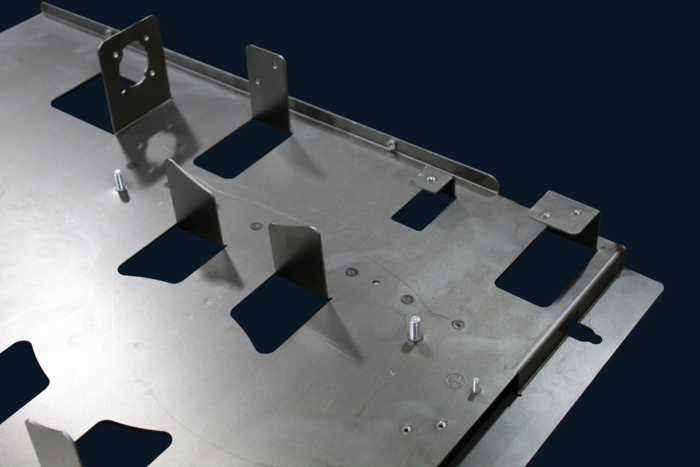
We Screwed Up : PEM Nuts
May 31, 2021

What happened?
Nonconforming parts were shipped to one of our customers. The operator missed installing PEM nuts into multiple part numbers. They did not double check their work to ensure all PEM nuts were installed before allowing the parts to ship.
How did we respond?
We initiated our 8D Corrective Action process starting with immediate containment and quarantine of all internal finished goods and WIP parts that included PEM installation. We then sorted and verified (within 24 hours) 100% of the next scheduled shipment of parts to our customer so that they didn’t experience any assembly line downtime and issued an RMA for return of the suspect parts.
How did we correct the problem?
We investigated the nonconformance and identified the root cause to be a gap in our work instructions with parts that required a large quantity of installs (6 different sizes, total of 64 PEM nuts and studs per part). We found 2 potential causes for the missing hardware. 1) We missed the installation altogether or 2) We were installing the wrong PEM nut in the wrong hole (smaller PEM into a bigger hole), and while it would temporarily hold, eventually it would break loose. We felt scenario 2 was the most likely cause.
While we had prints noting which PEM went where (and corresponding verification), we lacked a defined order in which each PEM needed to be installed which allowed variability in the install order increasing the likelihood one could be missed. We developed a color-coding system and assigned a color to each unique piece of hardware, placed that hardware in a bin of that color for operators to pick from, which ultimately would reduce the chance the wrong PEM was selected/installed in the wrong hole. We then updated our work instructions and inspection documents to define the order of which the hardware was to be installed/verified and created a visual aid to post at the machine.
The escape point was determined to be that we only had visual verification, no physical testing. The operator would visually confirm that the hardware was there, and while in this case it was, it was the wrong piece of hardware. For the similar sized hardware, we implemented a recurring push-out test to verify the self-clinching was sufficient, thus ensuring the correct PEM was being installed in the correct hole.
What were the results?
We submitted our findings and corrective actions to our customer for approval, which they did. After implementing the changes, we haven’t had a rejection for missing hardware since. Our customer is very happy with the improvements. As a bonus to the situation arising, we were able to make changes across other product lines as well to proactively guard against this nonconformance.
Mistakes can happen but the response is what matters. Trust Wisconsin Metal Parts to make it right. We welcome challenges! Contact Us today to see if we can develop a better process for making your part.







